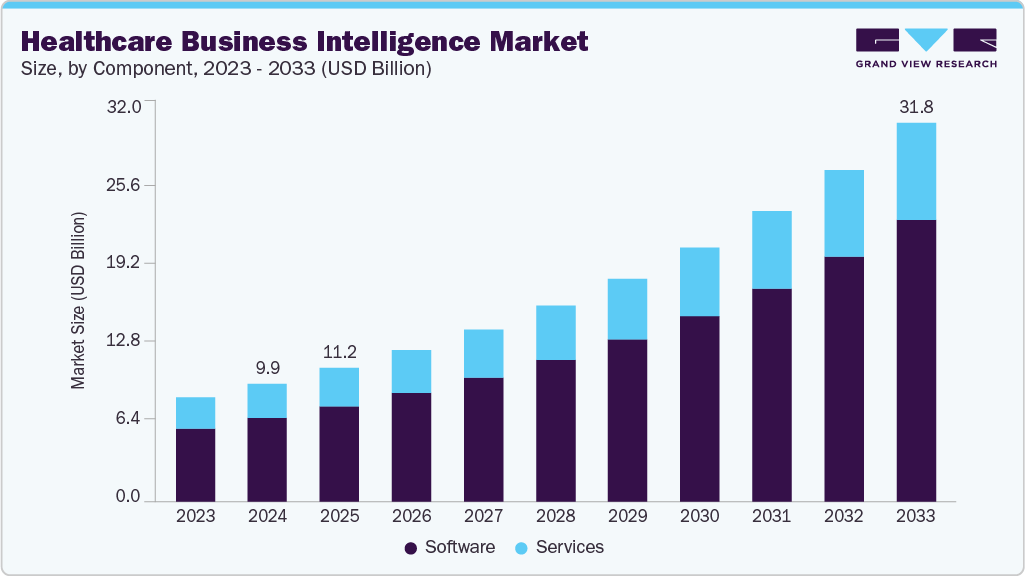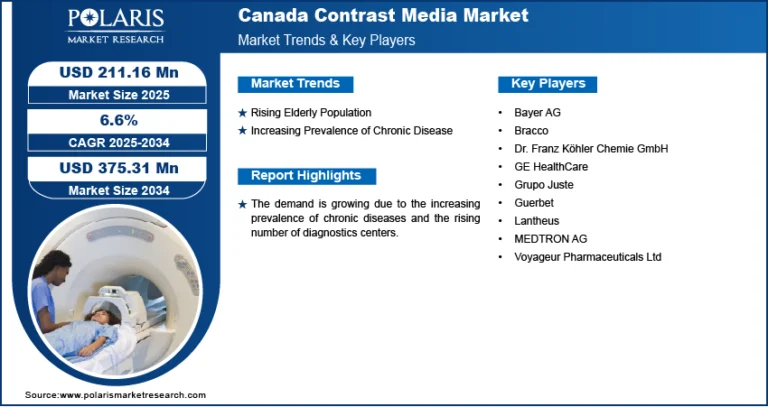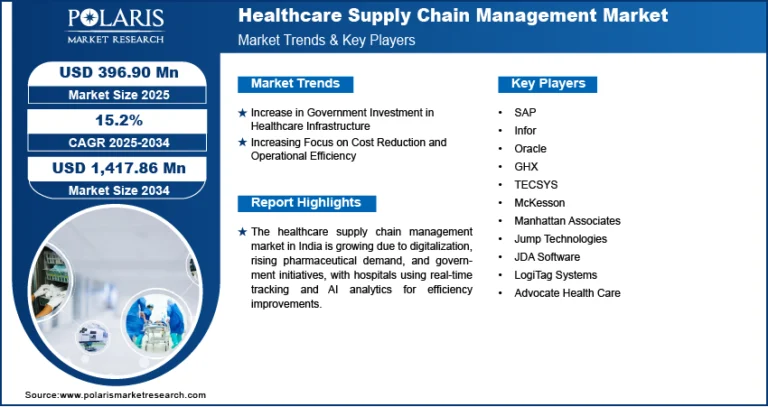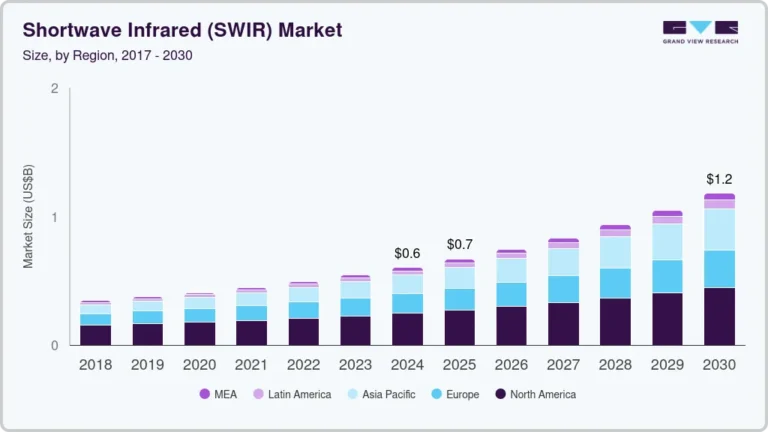Healthcare Business Intelligence Market Size, Share, & Trends Analysis Report And Segment Forecasts, 2025 – 2033

The global healthcare business intelligence market size was estimated at USD 9.92 billion in 2024 and is projected to reach USD 31.8 billion by 2033, growing at a CAGR of 13.9% from 2025 to 2033. The market growth is attributed to the increasing adoption of data-driven decision-making and increasing government initiatives focused on promoting EHR adoption, which drives market growth.
Key Market Trends & Insights
- North America dominated the market with the largest revenue share of 46.1% in 2024.
- The increased implementation of BI solutions and services in healthcare to offer enhanced patient care is fueling regional growth.
- By component, the software segment led the market with the largest revenue share of 70.74% in 2024.
- By mode, the cloud-based segment led the market with the largest revenue share of 48.30% in 2024.
- By application, the financial analysis segment led the market with the largest revenue share of 36.76% in 2024.
Market Size & Forecast
- 2024 Market Size: USD 9.92 Billion
- 2033 Projected Market Size: USD 31.8 Billion
- CAGR (2025-2033): 13.9%
- North America: Largest market in 2024
- Asia Pacific: Fastest growing market
Request a free sample copy or view report summary: https://www.grandviewresearch.com/industry-analysis/healthcare-business-intelligence-market/request/rs1
Furthermore, the rising need to curb healthcare expenses and enhance patient outcomes is anticipated to fuel the market growth over the forecast period. The adoption of cloud-based software allows hospitals, health providers, payers, and life sciences manufacturers to convert their data into insightful dashboards and graphs, thereby increasing market growth. For instance, Microsoft offers Power BI, which can empower healthcare organizations to derive Middle East & African insights from patient data, enhancing care quality. Healthcare practitioners can tailor treatment strategies, forecast disease outbreaks, and elevate patient care outcomes through data trend analysis, including patient readmission patterns.
Moreover, the increasing adoption of BI tools for risk management is fueling market growth. Predictive analytics enables healthcare institutions to prevent potential medical challenges patients face and helps them take timely Middle East & Africasures to mitigate the impact. Furthermore, it is helpful in operational management and epidemiology. These BI tools provide critical information in a simplified manner that facilitates users’ straightforward interpretation. In addition, it supports large-scale data distribution, wherein large volumes of personalized BI content are efficiently shared with multiple end users. Thus, owing to the valuable new data insights healthcare BI offers, the demand for software solutions and services is anticipated to rise during the forecast period.
Market Concentration & Characteristics
The chart below illustrates the relationship between industry concentration, industry characteristics, and industry participants. The x-axis represents the level of industry concentration, ranging from low to high. The y-axis represents various industry characteristics, including the impact of regulations, degree of innovation, industry competition, regional expansion, and level of partnerships & collaboration activities. The healthcare business intelligence industry is fragmented, with many global and local players operating.
The degree of innovation in the healthcare business intelligence industry is high, driven by the need for real-time data analytics, personalized care, and value-based outcomes. Advanced AI, machine learning, and predictive analytics tools transform how healthcare providers interpret data, leading to enhanced decision-making. Startups and established companies continuously develop solutions offering deeper insights, predictive models, and automated reporting, facilitating data-driven healthcare management and improving patient outcomes. For instance, in July 2022, Experity introduced a new Business Intelligence module as part of its electronic medical record and practice management solution (EMR/PM). This launch provides urgent care teams with comprehensive and actionable metrics, enabling informed business decision-making processes.
Healthcare Business Intelligence Market Report Scope
|
Report Attribute |
Details |
|
Market size value in 2025 |
USD 11.2 billion |
|
Revenue forecast in 2033 |
USD 31.8 billion |
|
Growth rate |
CAGR of 13.9% from 2025 to 2033 |
|
Base year for estimation |
2024 |
|
Historical data |
2021 – 2023 |
|
Forecast period |
2025 – 2033 |
|
Quantitative units |
Revenue in USD million/billion and CAGR from 2025 to 2033 |
|
Report coverage |
Revenue forecast, company ranking, competitive landscape, growth factors, and trends |
|
Segments covered |
Component, mode of delivery, application, end use, region |
|
Regional scope |
North America; Europe; Asia Pacific; Latin America; Middle East & Africa |
|
Country scope |
U.S.; Canada; Mexico; UK; Germany; France; Italy; Spain; Sweden; Denmark; Norway; China; Japan; India; Australia; South Korea; Thailand; Brazil; Argentina; South Africa; Saudi Arabia; UAE; Kuwait |
|
Key companies profiled |
Microsoft; Oracle; SAP; Salesforce, Inc.; Perficient Inc. (acquired by EQT AB in October 2024); Cloud Software Group, Inc.; Infor(a subsidiary of Koch Industries) ; Domo Inc.; Sisense Ltd.; Panorama Software Inc. (a Top Group Company), IBM Corporation, Innovaccer |
|
Customization scope |
Free report customization (equivalent up to 8 analysts working days) with purchase. Addition or alteration to country, regional & segment scope. |
|
Pricing and purchase options |
Avail customized purchase options to meet your exact research needs. Explore purchase options |






